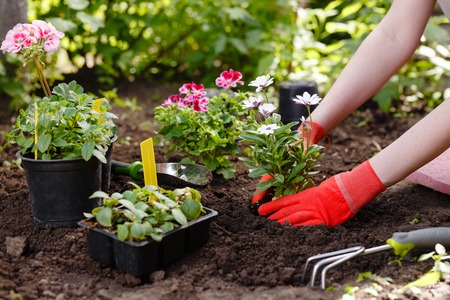1. Understanding the Importance of Winter Mulching
When winter hits, plant roots can suffer from extreme temperature swings and damaging frost heaving. That’s where mulch comes in. Mulching in winter is one of the best ways to protect your plants and give them a better chance of thriving when spring returns.
How Mulch Works as an Insulator
Mulch acts like a natural blanket for the soil. It helps maintain a more consistent soil temperature by trapping heat and reducing the impact of freezing and thawing cycles. Without this protective layer, bare soil can warm up during a sunny winter day and then freeze again at night, which causes frost heaving — a process that pushes plant roots upward, exposing them to cold air and potential damage.
Common Benefits of Winter Mulching
| Benefit | Description |
|---|---|
| Temperature Regulation | Keeps soil temperatures stable to prevent root stress. |
| Frost Heave Prevention | Reduces ground movement that can expose roots to freezing air. |
| Moisture Retention | Helps soil retain moisture during dry winter periods. |
| Weed Suppression | Limits weed growth even in dormant seasons. |
Why This Matters in U.S. Gardens
In many parts of the U.S., winters can bring sudden temperature drops followed by mild spells. These fluctuations are especially tough on perennials, shrubs, and newly planted trees. Adding mulch before the ground freezes helps lock in warmth and reduces the risk of damage caused by these unpredictable shifts. Whether youre gardening in New England or the Midwest, understanding how mulch supports root health is key to successful winter prep.
2. Choosing the Right Mulch Materials
When winter rolls in, picking the right mulch can make a big difference in how well your plants survive the cold. The goal is to insulate plant roots from freezing temperatures and reduce soil temperature swings. Some mulches do this better than others, so let’s take a look at popular winter mulch options and how they hold up during chilly weather.
Top Winter Mulch Options
Here are some of the most effective mulch materials for insulating plant roots in winter:
| Mulch Type | Insulation Ability | Best Uses | Notes |
|---|---|---|---|
| Straw | Excellent | Vegetable gardens, perennial beds | Lightweight and airy, traps heat well; avoid hay as it may contain weed seeds |
| Shredded Bark | Good | Around trees and shrubs | Long-lasting and decorative; may compact over time, so check regularly |
| Pine Needles | Moderate to Good | Acid-loving plants like blueberries or azaleas | Allow air flow while providing coverage; slightly acidic pH can benefit certain plants |
| Compost | Moderate | Flower beds, vegetable gardens | Adds nutrients as it breaks down; not as insulating on its own but great when combined with straw or leaves |
What to Avoid
Avoid using freshly chipped wood or grass clippings in the winter. Fresh wood chips can tie up nitrogen in the soil as they decompose, and grass clippings tend to mat down and retain moisture, which can cause rot or mold.
Pro Tip:
If youre unsure which mulch to use, try layering two types. For example, place a layer of compost around the base of your plants for nutrients, then top it off with straw for insulation. This gives you both warmth and soil health benefits.
How Much Mulch to Use?
A good rule of thumb is to apply 2–4 inches of mulch around your plants once the ground has started to freeze. This helps lock in existing soil warmth without creating a haven for pests earlier in the season.
Selecting the right mulch helps protect your garden investment through harsh winters. Whether youre covering up roses or keeping kale cozy, choosing materials that provide both insulation and breathability is key.

3. Proper Timing for Winter Mulching
When it comes to protecting your plants during winter, timing is everything. Applying mulch too early in the fall can actually trap moisture and create a damp environment that encourages rot or fungal diseases. On the other hand, mulching too late might not give your plants the insulation they need when the cold hits. Knowing exactly when to mulch helps ensure your plant roots stay safe and healthy through winter.
Wait Until After the First Hard Frost
The best time to apply winter mulch is after the first hard frost but before the ground freezes solid. A hard frost typically occurs when temperatures drop below 28°F (-2°C) for several hours. This signals that your plants have entered dormancy and are ready for their winter blanket.
Why Wait?
- Prevents Rot: Waiting until dormancy reduces the chance of trapping excess moisture around active roots.
- Avoids Pests: Early mulching may attract pests looking for warm shelter.
- Better Insulation: A frozen top layer helps lock mulch in place, reducing movement from wind or rain.
Regional Timing Guide
Use this general guide based on U.S. regions to help you decide when to mulch:
| Region | Recommended Time to Mulch |
|---|---|
| Northeast & Midwest | Late October to Mid-November |
| Southeast | Mid-November to Early December |
| Northwest | Late October to Early November |
| Southwest | Early to Mid-November |
| Pacific Coast (Mild Winters) | Late November if needed |
Tip:
If you’re unsure whether its time, check your local forecast or extension office for average frost dates. You can also touch the soil—once it feels cold but not frozen, it’s usually a good time to apply mulch.
4. Effective Mulching Techniques
Using mulch properly during winter can make a big difference in protecting your plant roots from freezing temperatures. The right application method depends on your local climate, the types of plants youre growing, and the kind of mulch you use. Below are practical tips to help you apply mulch effectively.
Mulch Depth Guidelines
The depth of mulch is important—too little won’t insulate well, and too much can suffocate roots or invite pests. Here’s a quick guide based on mulch type:
| Type of Mulch | Recommended Depth |
|---|---|
| Shredded Bark or Wood Chips | 2 to 4 inches |
| Straw or Pine Needles | 3 to 6 inches |
| Compost or Leaf Mold | 2 to 3 inches |
| Evergreen Boughs (for tender perennials) | 4 to 6 inches loosely layered |
Spacing Around Plant Stems and Trunks
A common mistake is piling mulch directly against stems or tree trunks, which can lead to rot and invite rodents. Always leave some space:
- Trees and Shrubs: Keep mulch 2–4 inches away from the trunk.
- Perennials and Annuals: Leave about 1 inch around the base of each plant.
- Vegetables and Herbs: Mulch between rows but avoid touching stems directly.
Catering to Regional Climates
Your location affects how and when you should apply mulch:
| Region | Tips for Winter Mulching |
|---|---|
| Northern States (e.g., Minnesota, Maine) | Apply after first hard frost; use thicker layers for deep freeze protection. |
| Southern States (e.g., Texas, Georgia) | Lighter mulching needed; focus on temperature swings and moisture retention. |
| Pacific Northwest (e.g., Oregon, Washington) | Use well-draining mulch like bark to prevent soggy soil in wet winters. |
| Midwest (e.g., Illinois, Ohio) | Add extra coverage for perennials; consider straw or pine needles for insulation. |
Selecting Mulch Based on Plant Type
Certain plants benefit more from specific mulches:
- Roses and Tender Perennials: Use evergreen boughs or straw for breathable insulation.
- Berries (like strawberries): Straw is ideal to protect crowns from frost.
- Trees and Shrubs: Shredded bark helps maintain even soil temperatures.
Pro Tip:
If you live in an area with fluctuating winter temps, wait until the ground is frozen before applying mulch. This prevents rodents from nesting and avoids trapping warmth that can trigger premature sprouting.
5. Common Mistakes to Avoid
Mulching in winter is a smart way to protect your plants, but doing it wrong can do more harm than good. Here are some of the most common mistakes gardeners make—and how you can avoid them.
Over-Mulching
Using too much mulch can suffocate plant roots and trap excess moisture, leading to rot and fungal diseases. A layer thats 2 to 4 inches thick is usually enough for most garden beds. For trees and shrubs, keep mulch about 3 inches deep and never pile it against the trunk.
Using the Wrong Mulch Materials
Not all mulch is created equal. Some materials are better suited for winter insulation than others. Heres a quick comparison:
| Material | Pros | Cons |
|---|---|---|
| Shredded Bark | Good insulation, breaks down slowly | May tie up nitrogen as it decomposes |
| Straw | Excellent insulation, lightweight | Can blow away if not secured, may contain weed seeds |
| Compost | Adds nutrients while insulating | Packs down easily, may not insulate as well on its own |
| Leaves (chopped) | Abundant, free, decent insulation | If left whole, can mat down and block airflow |
Applying Mulch Too Early
If you apply mulch before the ground has frozen, you might invite rodents or delay dormancy in plants—two things you want to avoid in winter prep. Wait until after the first hard frost so that the soil has cooled down but hasn’t completely frozen yet. This timing helps lock in cold temperatures and prevents premature thawing during winter warm spells.
Quick Tips to Remember:
- Aim for 2–4 inches of mulch—no more, no less.
- Select materials that provide both insulation and breathability.
- Don’t rush—wait for the right time in late fall or early winter.
- Avoid creating “mulch volcanoes” around tree trunks.
By steering clear of these common mulching mistakes, youll give your plants the best chance at surviving—and thriving—through winter.
6. Winter Mulching for Specific Plant Types
Not all plants need the same type of winter mulch. To give your garden the best protection through cold months and set it up for a strong spring comeback, its important to adjust your mulching technique based on what youre growing. Heres how to tailor your approach for perennials, shrubs, trees, and edible gardens.
Perennials
Perennial plants benefit from a light mulch layer that helps regulate soil temperature and moisture. Wait until the ground has frozen before applying mulch—this prevents rodents from nesting in warm mulch layers too early.
Best Practices:
- Use straw, shredded leaves, or pine needles for breathability.
- Apply 2–4 inches of mulch once the ground is frozen.
- Avoid compacting mulch directly on plant crowns to prevent rot.
Shrubs
Shrubs can suffer from freeze-thaw cycles and windburn. Mulch helps insulate roots and retain soil moisture during winter droughts.
Best Practices:
- Create a 3–4 inch thick ring of mulch around the base, keeping it a few inches away from the stem or trunk.
- Bark mulch or wood chips work well for shrubs due to their durability.
Trees
Younger trees are especially vulnerable to root damage from extreme cold. A proper mulch layer can protect them through harsh winters.
Best Practices:
- Apply a 3–5 inch layer of mulch in a donut shape around the tree, not touching the trunk.
- Avoid “volcano mulching,” which piles mulch against the trunk and can cause disease or pest problems.
Edible Gardens (Vegetables & Herbs)
If you’re overwintering crops like garlic or want to protect herb perennials like rosemary or thyme, mulching is key. It keeps soil temperatures more stable and reduces erosion and nutrient loss.
| Crops | Recommended Mulch | Mulch Depth |
|---|---|---|
| Garlic & Onions | Straight straw or shredded leaves | 4–6 inches |
| Kale & Spinach (Overwintering) | Pine needles or straw | 2–3 inches |
| Perennial Herbs | Bark mulch or chopped leaves | 2–4 inches |
No matter what you’re growing, always check for signs of pests or mold under your mulch during occasional winter thaws. Adapting your mulching method by plant type ensures healthier roots through winter and better growth when spring arrives.


